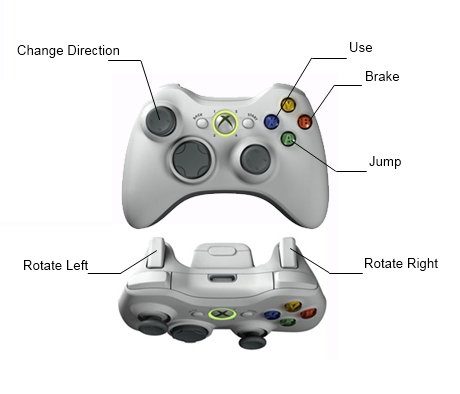The EQUIS Lab's Big Bad World of Exercise
From EQUIS Lab Wiki
Contents |
Introduction
A massively multiplayer online video game: powered by your legs.
Welcome to the documentation site of The Big Bad World of Exercise, the latest exercise game (exergame) from the folks at the EQUIS Lab: creators of Frozen Treasure Hunter and Life is a Village!
The game is being designed and programmed by two students: Louis Noval, a French HCI student from Paul Sabatier University and Eril Berkok, an undergraduate Queen's Computing student (funded by NSERC), based on an original idea by Dr. T.C. Nicholas Graham. The project was conceived for two specific purposes: to enable longitudinal studies of exergaming, and to provide an easy to use 2D game engine upon which other exergames may be built in the future.
To accomplish the former goal, the game needs to engage the players for extended periods of time. To this end, the game makes clever use of long and short term goals (perhaps more familiarly described as achievements), and incorporates a persistent multiplayer component (not unlike that found in World of WarCraft). By receiving achievements, the player is rewarded with building blocks with which they will eventually be able to construct their own levels, or a home base of their own: all within this persistent world. Log off and come back later, and all of your work is still there, in the same world everyone else inhabits. We hope that by including these sort of aspects into the game, we give the player an incentive to not only play more during each session, but play the game over a longer period of time.
The latter goal is accomplished by developing the game with the mindset of reusability. We hope that our engine will be clean, concise, generic and easy to understand so that future students at this lab may take what we've done, and shape it to their own whims.
Target Audiences
The game is targeted at several audiences, some of whom are detailed below:
The middle-aged, non-exercising gamer: one that knows that exercise is good for their health, but maybe isn't motivated to participate in it regularly. The game provides a conduit through which the gamer may satisfy two needs at once: to game and to exercise, and by extension, stay healthy.
The at-home cyclist: someone who bikes in the comfort of their own home on a regular basis to begin with. Incorporating similar forms of exercise in the form of a video game better engages the player, motivating them to continue doing that exercise perhaps beyond the amount they'd done previously.
The issues involved with targeting a variety of audiences such as these ones is the varying fitness and gaming skill levels within and between them. The gameplay needs to be simple and easy to understand, yet be complex enough to master to maintain interest from some of the more core gamers. On the other hand it needs to still be interesting for the fit players, and thus needs to accomodate audiences of both low and high fitness levels. These issues will need to be addressed throughout the design process.
Controls
The game makes use of a combination of two input methods: a set of pedals and a Wireless Xbox 360 Controller. By pedaling, the player can move their avatar throughout the game world, and may further interact with the world (jumping, braking, using) using the Xbox 360 Controller.
Below is a visual representation of the working control scheme on the Xbox 360 Pad:

Throughout the game the player may find his avatar in the air but not aligned correctly to make a safe landing. To this end we have incorporated rotation controls, which are implemented with the triggers on the pad.
Additionally, the Use button (X) will be used when the player's avatar is in contact with a number of different physics based objects - fans, doors, etc. - in order to make use of them. Opening doors, spinning fans, and the like are all elements of the gameplay in the game.
Here is an image of the pedals which are used to move the avatar:

Screenshots



